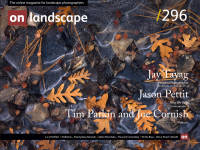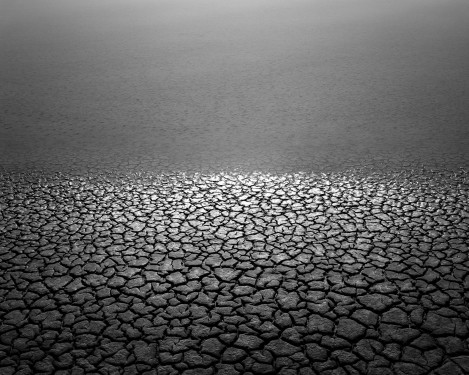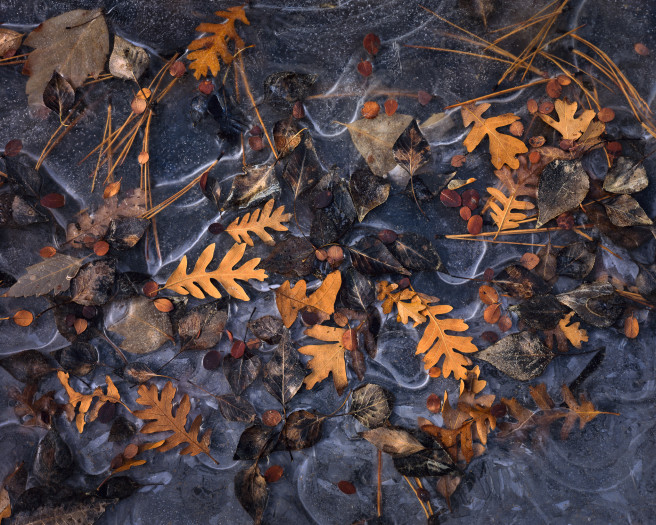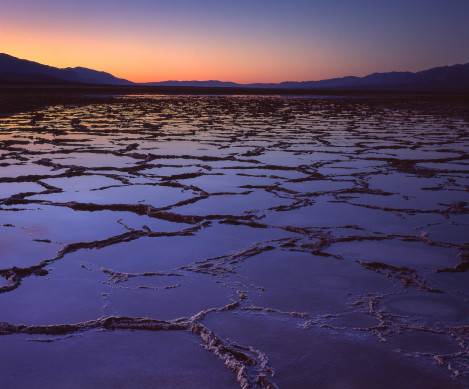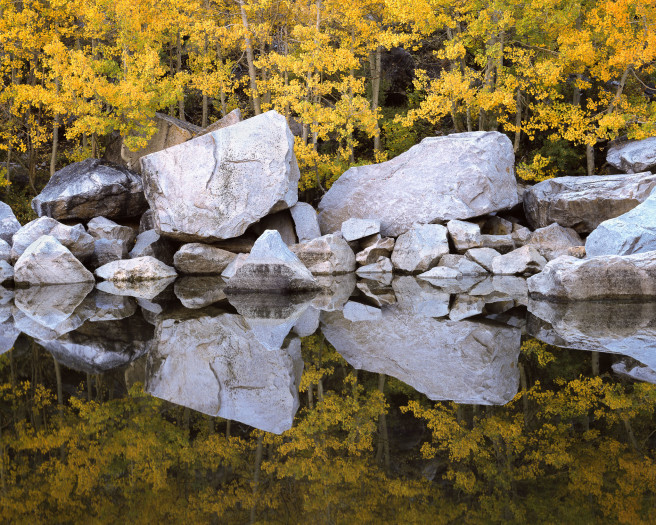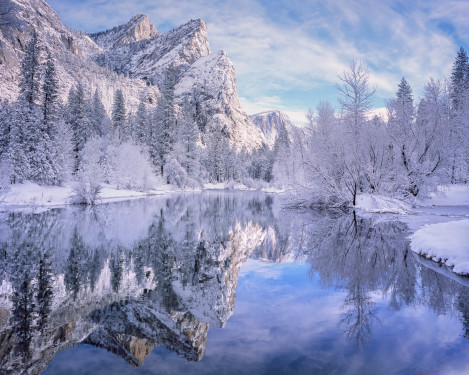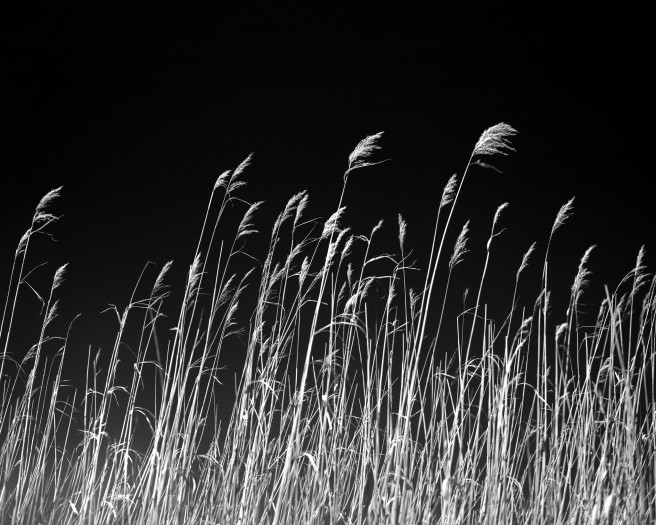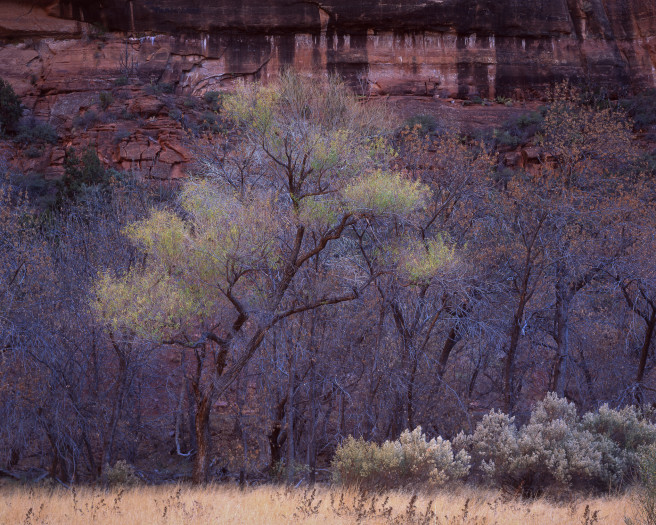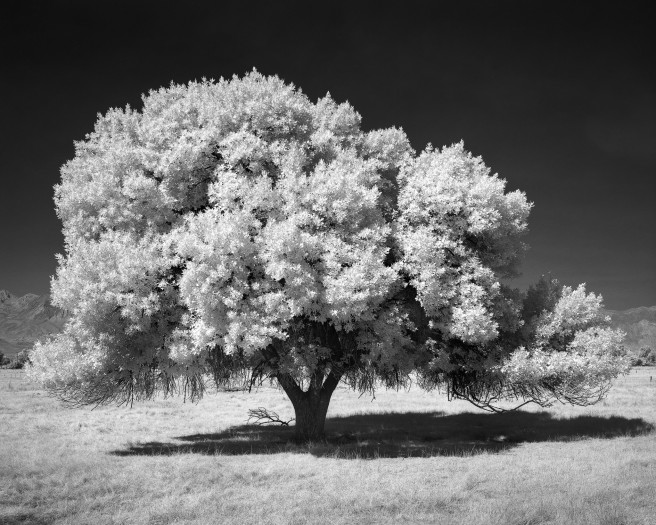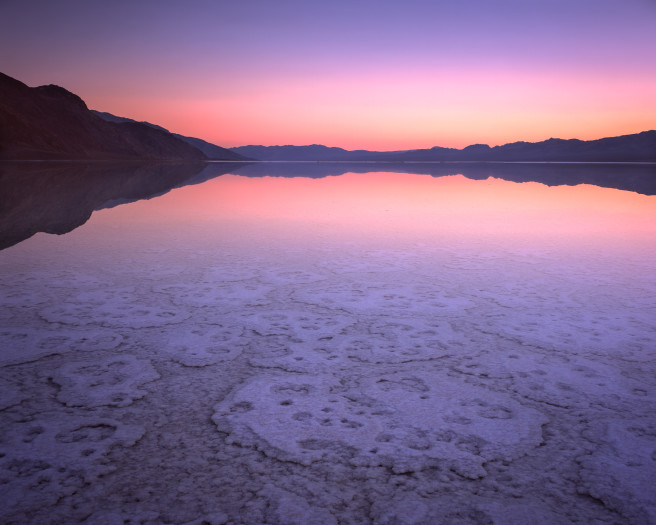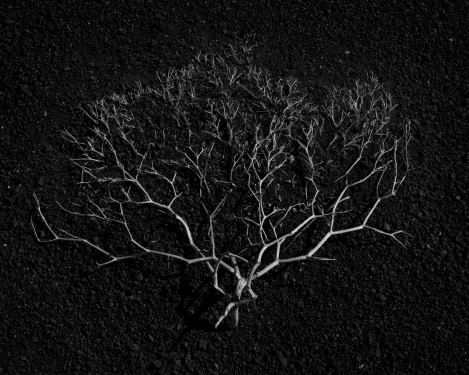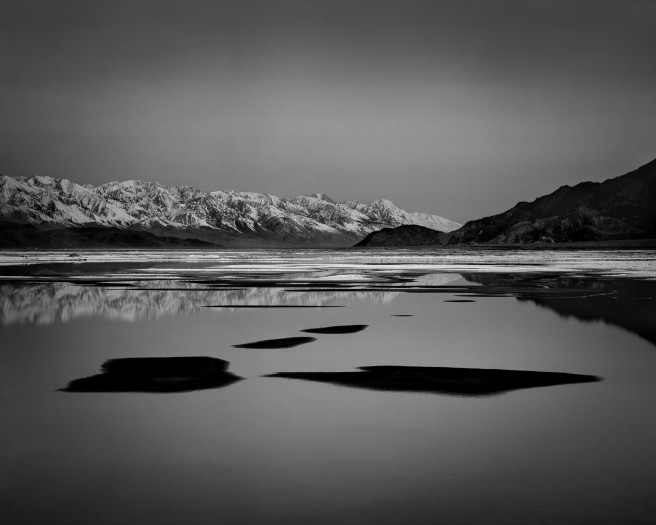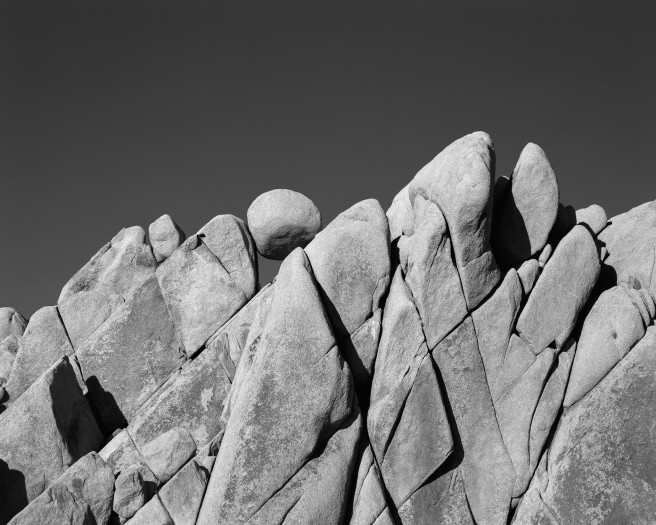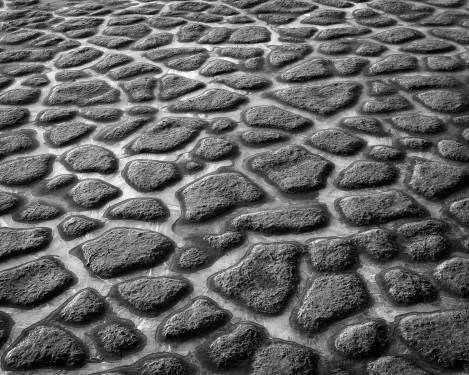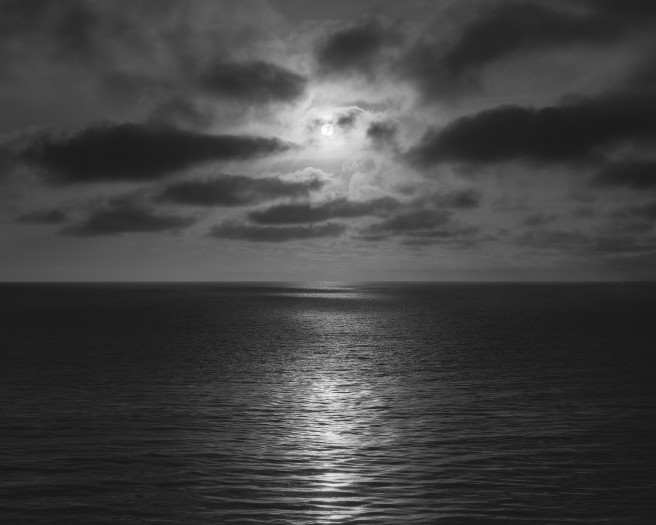Featured Photographer

Jay Tayag
Jay Tayag is a father to a teenage daughter and also happens to be an amateur large format landscape photographer based in Redondo Beach, California. He primarily photographs in the Eastern Sierra, Death Valley National Park, Yosemite National Park and their surrounding areas. He is part of The Darkslides, a collective of large format landscape photographers.

Michéla Griffith
In 2012 I paused by my local river and everything changed. I’ve moved away from what many expect photographs to be: my images deconstruct the literal and reimagine the subjective, reflecting the curiosity that water has inspired in my practice. Water has been my conduit: it has sharpened my vision, given me permission to experiment and continues to introduce me to new ways of seeing.
Jay Tayag’s black and white image ‘Empty’ caught my eye after browsing the 2023 NLPA competition results. It shows mud cracks – always a popular subject – on the Eastern Sierra, but these diminish and disappear into still water and are highlighted at the water’s edge by the morning sun. It’s an image made on film – if you browse Jay’s Instagram, you’ll see that alongside the final photograph, he shows negative or transparency alongside set-up and location shots. Jay works with computers, and I can’t but help but wonder if this is another factor in his love of the slow meticulousness of large-format film photography. He talks about how he came to use an antiquated process – even if his camera is now very 21st century – and what he gains from it, irrespective of the outcome.
Would you like to start by telling readers a little about yourself – where you grew up, what your early interests were, and what you went on to do?
My name is Jay Tayag, I was born in the Philippines but moved to the United States when I was about 7 years old. Our family moved around a lot until we settled in Port Hueneme, California (Southern California). In high school, I went fishing, played tennis and rode mountain bikes. It wasn't until college that I started camping and snowboarding. After college, I became a computer programmer. Little did I know that these outdoor activities and even computer skills would help me in my ultimate pursuit of large format landscape photography.
How did you become interested in photography and what were your early images of, or about?
Photography has been on the back of my mind since I was in college. My brother had taken it up, and it piqued my interest. I was just too busy and too poor to take it up at the time. It was only after college that I was able to take a beginner film photography class around 2002. I had a blast. It exposed (pun intended) me to a different way of seeing and introduced me to the darkroom. If I wasn't taking photos, I was in the darkroom working on my prints and smelling the fixer. Unfortunately, a little after the class ended and when my monthly membership to the local darkroom expired, I slowly lost the momentum.
The photos that I took then were guided by the assignments that we had. Some examples of these were to take a picture of the same subject in different ways on one roll of 35mm film. It was around the time when 9/11 happened, so I decided to take pictures of the American flag. It wasn't exactly what the instructor had in mind as I was taking pictures of different American flags, but he let me roll with it.
It wasn't until a little later in 2008, when I took photography up for the second time, that it basically stuck. It was when my wife was expecting, and I wanted to take meaningful photos of my baby when she arrived. This time, we purchased a digital camera, and I dived head first into this new world of photography. I shot everything. Sunsets, sunrises, flowers, the kitchen fan, fireworks, neighbourhood cats, etc. I learned how to shoot macro, do light painting, long exposures and even, heaven forbid… HDR. (Early HDR was soooo bad) I learned how to shoot water droplets using off camera flash. I bought the Adobe Lightroom software. I even started my webpage (which looked very different from today). So, when baby Grace arrived, I applied all that I learned on her. She was probably the most documented baby on the block. She was born to a daddy paparazzi. Thankfully, I didn't do HDR on her.
When and how did you get into large format film photography? What is it about the equipment and the process that appeals to you?
I started shooting large format film in 2017. But before that, I had been shooting digital since 2008. Around 2015, I started to feel something was missing. I would come back from a photo trip with around 1000 images and feel good about 3 of them. A little afterwards, I wouldn’t feel any connection to any of them. It was then that I found Ben Horne's YouTube channel. It initially caught my eye because he was exploring Death Valley, a place I had just started exploring myself. He also had a funny looking camera that I had no interest in.
You can look at large format landscape photography in either a glass half full or glass half empty kind of way. Yes, the technology is ancient. It is bulky. It is heavy. Film is expensive. It is hard to use. It is obsolete. However, because it is all those things and more, it slows me down. It makes me focus. It’s no longer about how many shots I can take; it just becomes about the one I am about to take. It helps me to be more present and savor all that is around me. There are lots of things you will not be able to shoot with this gear, but if you embrace it, the limitations of the gear will not confine you. It will free you to quickly find what you CAN shoot.
I like the tactile feeling of it. The weight of the gear. The feel of the wood on the camera. I have to unfold the camera and set it up myself. I decide which of my 4 lenses to use. I have to manually focus the camera and apply any needed camera movements. I decide what film to use. I choose the aperture and shutter speed based on the meter reading that I take with my handheld light meter. I have to remember to adjust for reciprocity failure if needed. Add filters, if needed. If the conditions are right, I make a shot. When I get home, I process the film, scan it and edit the image. With this equipment and process, I am intimately connected to each image. A lot of effort and thought goes into each one. It is a slow, manual process, so I make fewer images. Because of that, every successful image is a treasure, and every failure is a lesson.
Looking back at it, shooting large format film was the single best thing that I did for my photography. It definitely is not for everyone. It's not about the technology, or how many images you can take, or the convenience, or the megapixels, etc. For me, it's about the experience before, during and after making the shot. There is a feeling of pride that lasts when you see one of your successful images on a light table and hold the film in your hands. The film that YOU made from beginning to end. Well, actually, it's about the film that I made, but you get the picture.
Which cameras and films are your current favourites? Has this changed in the time you’ve been using film?
My current favourite and recently purchased camera is my Chamonix Alpinist X 8x10 field camera. It’s a modern wooden field camera that uses carbon fiber and anodized aluminum parts. It’s so precise and well-built that it’s just a joy to use; old school tech with a new school twist. It’s very lightweight for an 8x10 camera at about 6 pounds. As with everything large format, it’s expensive but after about 4 months of using it, I still feel that it was worth it.
My first large format camera was a "Shen Hao HZX45 II A" 4x5 camera. I shot with it for 4 years and then transitioned to an Intrepid 8x10 MkII. Then over to the Intrepid 8x10 Mk III until I got the Chamonix. Each new camera became the favourite. Hopefully, I won't be purchasing any more new favourites for a while. (I took a big hit on that last one.)
My current favourite film is Ilford Delta 100. It's a very clean film. I'm comfortable rating it anywhere from ISO 50-400 with no noticeable grain on 8x10. I develop using HC110, 1:32 dilution. Since I started shooting 8x10, I gravitated towards black and white film because of the ridiculous price of Fuji Provia 100, a colour slide film which is my second favourite film. And because of the disappearance of Fuji Velvia 50, another colour slide film… my third favourite.
When I was shooting mostly 4x5, Velvia 50 was a lot more attainable and I primarily shot with that film. Black and white was somewhat of an afterthought since I was really infatuated with the look of slide film on a light table… and still am.
What part does digital play in your process? Which parts of the workflow especially interest you and have you got to the point of printing your negatives and transparencies?
As far as actually taking the photo, there is very little that digital takes part in other than using my Sekonic L-758DR light meter. The camera is really just an expensive light tight box that holds your lens on one side and the film on the other. I use the Viewfinder app on my iPhone to help me frame up the shot before I take the camera out. I use the same app to take scouting photos. I tend to take some videos and pictures on my phone that get synced up to the Adobe Cloud and eventually to Lightroom Classic on my computer.
After I go home and process the film, I scan it with an Epson V800 flatbed scanner. The film goes into a binder. I remove the dust spots from the scanned image with Photoshop, apply sharpening and import it into Lightroom. In Lightroom I use the iPhone shots from the location to get the GPS location and add the notes from my notepad to the image exif data. I try and do most of my editing in Lightroom as I like the non-destructive nature of it as well as its cataloging capabilities. After that, the images will eventually go on my website and social media.
Unfortunately, I don't have a dedicated darkroom to traditionally print my negatives and my inkjet printer broke down a couple of years ago. When the printer was working, I definitely printed my photos. It's very satisfying having the print in your hands.
The part of the workflow that I am currently most interested in and the reason I still haven't replaced the printer is the platinum palladium print process. I have been threatening to contact print my negatives using platinum palladium for a while now. I managed to collect all the equipment that I need to do it with. It's a little intimidating starting something that can get pretty expensive and time consuming. Then again, I'm shooting 8x10 film, so that shouldn't be a reason not to start platinum palladium printing. I think it would be great to be able to have an all analog process from capture to print. (iPhone photos and videos excluded.) So since I said it here on this article, I guess I'll have to start eventually.
Would you like to choose 2 or 3 photographs from your own portfolio and tell us a little about why they are special to you or your experience of making them?
Tree in fall colour, Zion Canyon
This photo was shot on 4x5 Velvia 50. It wasn't really taken by me but by my 10 year old daughter. Back in 2019, I took her to Zion National Park for her first camping trip. We were just exploring the canyon and came upon this tree. I thought it would be fun to show her how her dad took photos. I set the camera up, had her look under the dark cloth and let her take the shot. This was her first large format photo. (Or actually, the second exposure. Follow the link for more details on what happened.) That was a great trip, and I'll always remember it.
Eastern Sierra tree in infrared
This tree in the Eastern Sierra was shot on 4x5 IR film in 2021. When I first came across the tree, it was a bit windy. So, the image didn't turn out due to all of the motion blur. I came back the following year and was fortunate enough to capture it on a calm day. I eventually got an 11x14 platinum palladium print made by Michael Strickland, and it looks absolutely beautiful. It's currently framed and hanging on the wall behind my computer. Every so often, I take a magnifying glass and count the leaves. This is the reason why I want to try my hand at platinum palladium printing.
Flooded badwater basin
This was a recent photo taken in October 2023 at Death Valley. Badwater Basin became a lake due to Hurricane Hillary hitting the area in August of that year. The storm, however, damaged all the roads going in and out of Death Valley. I was monitoring the road status for months until it finally opened. I found my opening with the weather, work and home, and I made my way there. I scouted the area and found a good spot well before the light. I had plenty of time to set up my camera and enjoy just being out there. This was shot on 8x10 Fuji Provia 100. Provia only has about 5 stops of dynamic range. (Think shooting jpg.) I had to meter it perfectly so that the detail in the dark mountains (left), as well as the detail in the highlights, would be preserved. I used a soft 2-stop grad and placed it just below the horizon to make sure the glow from the sky, as well as the glow in the water, wouldn't blow out. Once the sun started to set, everything became still and quiet. I had to stand perfectly still for at least a minute so that the ripples from my movements went away to ensure that I could capture a perfect reflection. Then, I made the image. It's the quietest place that I have experienced, and the view that evening was surreal. It is one of the many reasons why I love visiting Death Valley. Seeing this film on a light table reminds me why I shoot large format films (and why I can't stop shooting colour completely). To me, this shot was made, not taken. The process of making it started after Hillary left Death Valley.
Tell us a little more about your ‘local’ area and the places that you are drawn back to?
I consider myself very lucky living in Southern California where the Eastern Sierra, Death Valley and Yosemite are all within driving distance from me (about 4-6 hours’ drive). Their proximity is key because I like visiting places often to get a better understanding of them.
The Eastern Sierra has some of the tallest mountains in the lower 48. It is the place I go for fall colour, but it offers so much more than that throughout the year. There are hidden gems scattered all over Highway 395, no matter the season. You just have to take the time and look. Admittedly, I have only explored the easy to get to areas. I would like to someday hike into the backcountry to experience the amazing landscape there.
Death Valley is so vast and diverse geologically from its sand dunes, salt flats, playas, badlands and canyons that it's just hard to choose which one I would want to try and shoot given the very limited time I usually have. The more you get to know this place, the more changes you will notice every year. The extreme silence and solitude that you can experience there is like no other.
There is nothing like Yosemite right after or during a winter storm. Consider yourself very lucky if you are in Yosemite Valley at that time. Anywhere you are, everywhere you look, it'll feel like you are in one of Ansel Adams' photographs.
You have a number of compositions on your website in both colour and black and white. Do you shoot using film or convert later? Do you have a personal preference between colour and monochrome?
I try to stay true to the film that I shot. If I shoot colour film, the final image will be a colour image. If I want to see both, I'll shoot both colour and black and white film. I usually have a good idea of how I want the final image to look like before capture.
Currently, I prefer to shoot with black and white film. I like the timelessness of it. It simplifies the image and emphasizes shapes and textures. Since it's a negative film, it affords more creative freedom with dodging and burning. I think 8x10 black and white film would be ideal for contact printing.
What difference has photography made to your view of the world? What have you gained through it, and in particular through large format work?
Photography has given me a set of new eyes. It taught me how to see differently… artistically. It’s like the movie The Matrix. Once I took the red pill, everything looked different, and there was no going back. It took me to places I would never have gone if I didn't have a camera. It made me learn more about the particular areas I visit year after year. When I learned more about a place, I gained a deeper appreciation of it. When you appreciate something, you want to protect it. So I try and leave the places I visit better than I found them and practice a leave no trace principle.
Large format teaches you patience and perseverance. It's a slow process, and it doesn't do well if you hurry it. The slow process gives me more time to enjoy the scene that I am photographing. When mistakes inevitably happen, I get angry, and I might cry, but eventually, it encourages me to come back and try again.
I’ve found a small but great community of large format photographers out there. I've had the pleasure to actually meet some of them and consider some of them my friends. They are all passionate about their craft and are great people.
Do you have any particular projects or ambitions for the future or themes that you would like to explore further?
As I mentioned before, I have wanted to try platinum palladium contact printing some of my negatives. It's been on my mind ever since I started shooting 8x10 and it's another reason why I started to shoot more black and white film. If it does well, maybe I'll start offering some of them for sale. If that doesn't work out, I’ll have to leave it to the professionals and buy a printer.
In terms of themes that I would like to explore… In the short term, I think snowy scenes are pretty magical, especially in black and white. Being from southern California, those kinds of scenes can be pretty rare. Hopefully, I'll get to shoot some this year. In the long term, when my daughter is off to college, I would like to take longer trips to visit and explore my bucket list of places to go: Utah, New Mexico, Northern CA, Oregon, Washington, Yellowstone, Glacier, etc.
If you had to take a break from all things photographic for a week, what would you end up doing? What other hobbies or interests do you have?
I would like to say that I would spend it getting in shape outdoors. I am very fortunate that I live near the beach, and during the summers, when my photography slows down and my daughter is out of school, I tend to run on the beach in the mornings before work and try and take walks in the evenings. (I've been putting on some weight lately, so I really need to do this.) I'm happiest outdoors. Since it is the start of winter, I would love to dust off the snowboard and go snowboarding with my brother and friends as if I were in my 20s again. Who knows if I'll get to do that, though?
And finally, is there someone whose photography you enjoy – perhaps someone that we may not have come across - and whose work you think we should feature in a future issue? They can be amateur or professional.
Ian Ruhter does some incredible work on wet plate collodion. He is a highly experimental photographer, which I love and admire. He once had a project where he drove around in a delivery truck that he turned into a camera obscura. In essence, he turned the truck into a giant camera. He made some incredible images with that truck. His Color Field project is also pretty amazing. I would love to learn more about what he is currently up to.
Thanks, Jay. You may have tempted a few more to consider dipping their toes into the deeper waters of film. Do let us know if you fulfil that ambition to print…
Jay’s photography can be found on his website, and if you’d like to see images and what goes into them, you’ll find him on Instagram.
You can find out more about The Darkslides, the collective of large format film landscape photographers that Jay mentioned, here. https://www.thedarkslides.com/.
- Zion leaf litter
- Eastern Sierra bush in winter
- Three Brothers after a winter storm in Yosemite
- Sunset on the Pacific
- Sunrise in a Death Valley saltflat
- Eastern Sierra frozen mud cracks
- Death Valley salt and mud cracks
- Back yard leaves
- Joshua Tree NP rocks
- Eastern Sierra high contrast reeds
- Empty – Eastern Sierra mudcracks
- Elfin Forest on the California coast.
- Eastern Sierra pond in fall
- Eastern Sierra mud cracks
- Eastern Sierra pond
- Dead bush on volcanic soil in the Eastern Sierra
- Tree in fall color, Zion Canyon
- Flooded badwater basin
- Eastern Sierra tree in infrared

